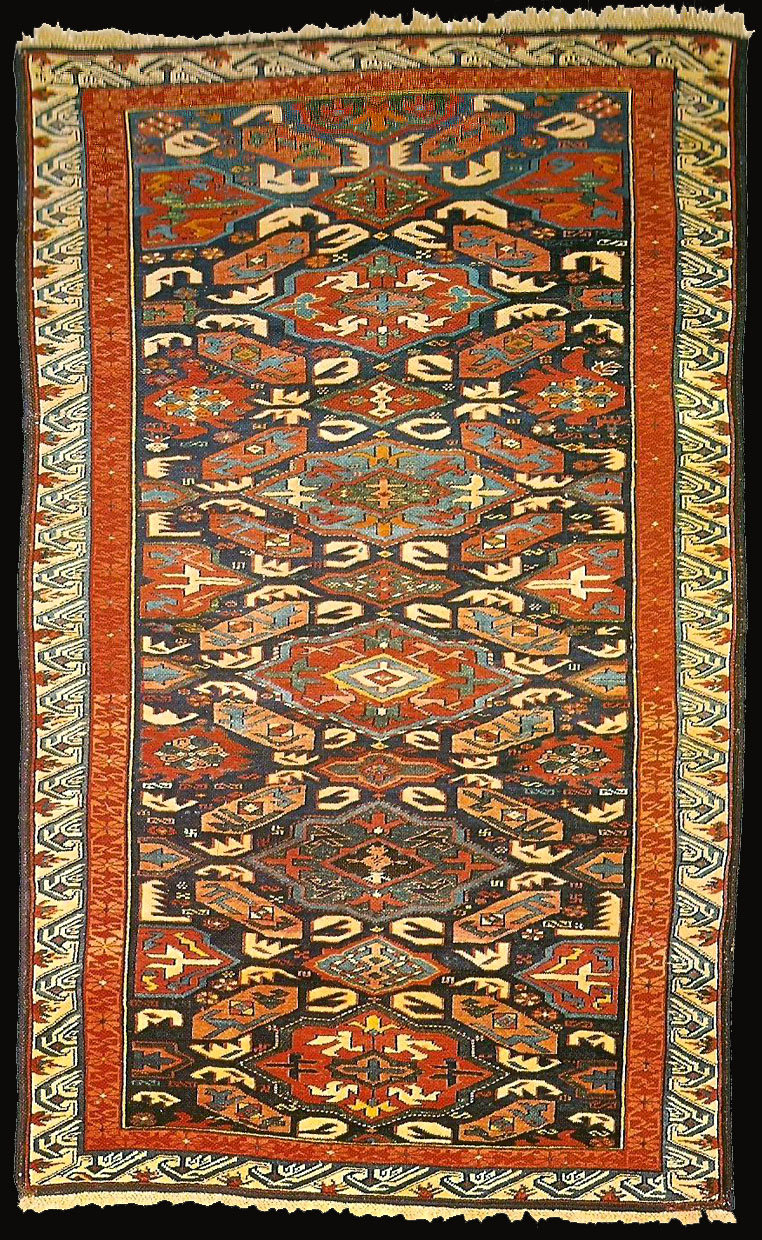|
6'8" x 4'11" [m.
2.05 X 1.25]
Warp: wool
Weft: wool, two shoots after each row of knots Knotting: Ghiordes, wool, 117
knots per square inch [1800 per dm.2]
This classic Sejshour design is focused by shapes that appear to be almost
more like elephant's feet than like true medallions. For example, they are
not connected to each other by offshoots, and the solidity of the field is
protected by anvil shapes along the border that extend into the field. In
fact, it is interesting to compare this with the Soumak in Plate 77, where
the central diamond shapes are also stepped, the use of the anvil is
prominent, and the rosette is used as a dominant secondary motif. Here one
may see dogs, swastikas, clouds, tarantulas, and abundant leaves and
flowers.
Although there is a plethora of colors, the dark blue background and
generous use of white in the smaller leaf shapes bring this rug together.
Shades of red, shades of blue, and a bit of yellow complete the color
scheme. Interestingly enough, red is sometimes used as an outline color
instead of the traditional black.
The two classic Sejshour (Seychour/Zeykhur) borders are seen here: the
running dog in blue, white, and red and the flowered band in pink and red.
published at Luciano Coen & Louise Duncan's The Oriental Rug
 |

